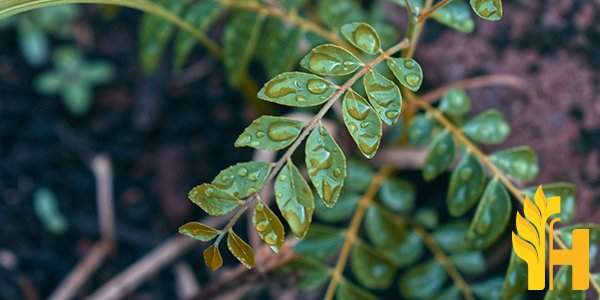Curry Leaves price

Where to buy and sell Curry Leaves, lowest (cheapest) and highest price.
check offers buy sell Curry LeavesToday price for Curry LeavesCurry Leaves wholesale prices 2022
The Current commodity price of Curry Leaves per kg, pound in the world in the global markets
curry leaves
Price range: 28 - 28 INR / 1 kg | Market: Viluppuram Wholesale Market | Date: 2024-09-09
curry leaves
Price range: 29 - 29 INR / 1 kg | Market: Viluppuram Wholesale Market | Date: 2024-07-08
curry leaves
Price range: 25 - 25 INR / 1 kg | Market: Viluppuram Wholesale Market | Date: 2024-07-04
curry leaves
Price range: 27 - 27 INR / 1 kg | Market: Viluppuram Wholesale Market | Date: 2024-06-27
curry leaves
Price range: 26 - 26 INR / 1 kg | Market: Viluppuram Wholesale Market | Date: 2024-06-20
curry leaves
Price range: 26 - 26 INR / 1 kg | Market: Viluppuram Wholesale Market | Date: 2024-06-17
curry leaves
Price range: 29 - 29 INR / 1 kg | Market: Viluppuram Wholesale Market | Date: 2024-06-10
curry leaves
Price range: 30 - 30 INR / 1 kg | Market: Viluppuram Wholesale Market | Date: 2024-06-06
curry leaves
Price range: 28 - 28 INR / 1 kg | Market: Viluppuram Wholesale Market | Date: 2024-06-03
curry leaves
Price range: 26 - 26 INR / 1 kg | Market: Viluppuram Wholesale Market | Date: 2024-05-27
Curry Leaves
Curry leaf (Murraya koenigii) trees grow up to 15 feet tall and produce yellow, white or red flowers. They are found in tropical locations such as Florida, Hawaii and Southern California. The leaves, which have a strong flavor similar to oregano or curry powder, are used dried or fresh in traditional Indian dishes such as kormas and curries. The leaves are also used in some teas. There are several varieties of curry leaf trees, including ones that have yellow-green leaves and others with red flowers. Curry leaf trees grow best in U.S. Department of Agriculture plant hardiness zones 10 through 12, where average annual high temperatures range from 70 to 95 degrees Fahrenheit. In cooler climates, curry leaf plants can be grown indoors in containers. Curry leaf trees are native to India and Southeast Asia, but they grow best in hot climates with long warm seasons. When planted in cool climates, the plants do not produce many leaves. The plants also need well-draining soil and average rainfall, similar to other tropical plants such as hibiscus. Curry leaf trees must be watered regularly and should not be allowed to dry out between waterings, as this can damage the plant's roots and inhibit growth. The plants also need an inch of mulch around their bases each year to retain moisture and protect from weeds. If flowering curry leaf tree bonsai are grown indoors, the plants should be placed near a southeast- or south-facing window. The ideal indoor temperature for curry leaf bonsai is 65 to 90 degrees Fahrenheit. A humidity tray filled with pebbles and water can help increase humidity around the plant's leaves. Curry leaf trees need six hours of full sun per day to produce leaves year-round. Caring for a curry leaf bonsai indoors requires frequent fertilization every month during the spring and summer growing seasons. Reduce or stop watering in the winter, allowing the soil to dry out between waterings. Curry leaf bonsai trees should be repotted every two or three years, using an all-purpose potting mix. Fertilize curry leaf plants before their normal fertilization cycle begins in the spring by applying a 10-10-10 NPK fertilizer diluted to one-third strength. Apply this once each month until September at the rate of 3 to 4 tablespoons per square yard. The leaves of curry leaf bonsai trees are normally green but can turn yellow or brown during periods of drought, cold drafts or lower light levels indoors. Leaf color can also change if the plant is under-fertilized, is too hot or has old age. When these conditions occur, reduce the amount of fertilizer you give curry leaf plants to once per month. Curry leaf bonsai trees should be pinched back to encourage branching when they are young to develop a bushier plant that will produce more leaves. Pinching stimulates growth hormones in the plant and makes it form multiple branches.Global curry leaves production
With an estimated production of 1.2 million tonnes in 2013, India is the world's largest producer of curry leaves. Other significant producers include Sri Lanka (500,000 tonnes), Pakistan (200,000 tonnes), and Bangladesh (100,000 tonnes). Global production of curry leaves is thought to be around 2 million tonnes. Curry leaves are used extensively in Indian cuisine, as well as in Pakistan, Sri Lanka, Nepal, Bangladesh and other South Asian countries. The leaves add a distinct flavor and aroma to curries and other dishes. In India, curry leaves are usually fried in oil with mustard seeds and other spices. This mixture is then added to the dish being cooked. Curry leaves can also be used fresh or dried. In Sri Lanka, curry leaves are used in a variety of dishes, including curries, stews, and soups. They are usually added at the beginning of cooking so that their flavor can infuse the dish. Curry leaves are a good source of vitamins A and C, as well as iron and calcium. They are also rich in antioxidants.Download our new
Husfarm App
Stay up to date with the current prieces of agricultural products all over the world.
Do you want to sell agricultural products?
Are you an Agricultural processor looking for high-quality products to buy?
Post an ad for FREE!
